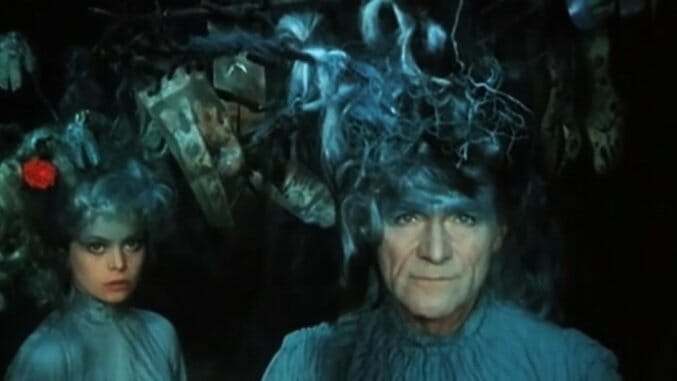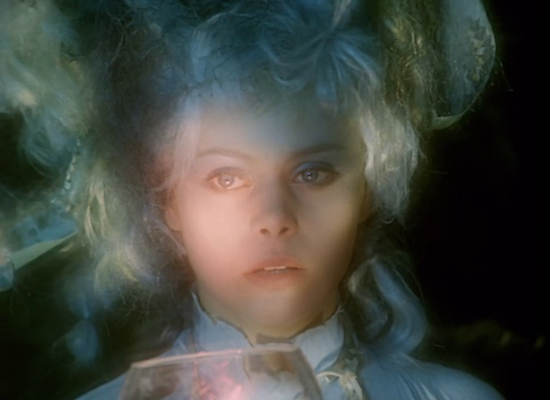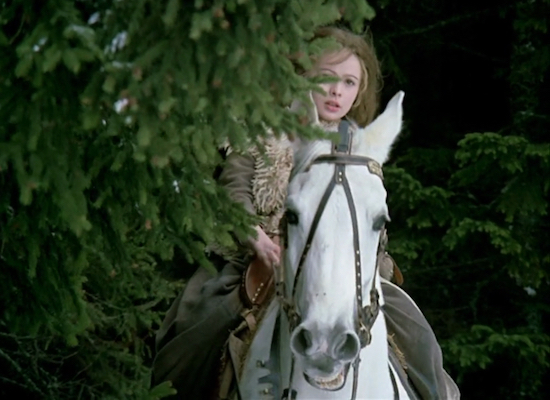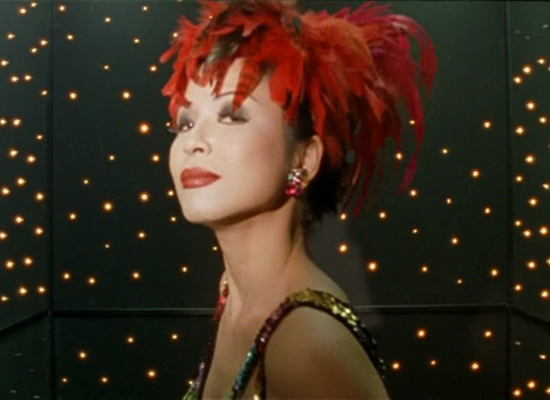
Sometimes life gets messy. Sometimes it’s unbearable. Sometimes you’re just plain bored, things are humdrum. Dull. For all of these moments we have the fantastical to distract us, cinematic flights of fantasy to whisk us away from the grayness, for a little while anyway. Fantasy films enchant and execute this like no other, bringing centuries’ worth of myth, children’s stories, fairy tales and human imagination to the screen. Look no further than Disney using the genre as the bedrock of their success and the lasting legacy of Japan’s Hayao Miyazaki and Studio Ghibli as a testament to its power—and we constantly want more.
Fantasy has been a genre staple since the earliest days of film, providing escape and inspiring wonder from Méliès’ experimental reels all the way to today’s Lord of the Rings-style blockbusters. In particular, markets outside the U.S. have a special touch with the genre, producing unique fantasy films worth seeing that, while popular in their home countries, aren’t as well known stateside. But they deserve to be.
The following list is just a sampling of five fantastical international films sure to spark a curiosity for the genre outside of the usual animated or blockbuster fare.
The Saragossa Manuscript
Director: Wojciech Jerzy Has
Year: 1965

A grand (182-minutes long) but quirky film from Poland, much lauded by Martin Scorsese and Francis Ford Coppola, The Saragossa Manuscript is a creepy and farcical romp in the same league as any tall-tale depictions of Casanova or Baron Munchausen. Based on the 1815 novel The Manuscript Found in Saragossa by Jan Potocki, the film is one huge-frame narrative, stories nestled one inside the other as recounted by the lead, Alphonse Van Worden (Zbigniew Cybulski), a genial buffoon of a captain in the Walloon Guard during the 18th century. His stories are found in the film’s titular volume by two enemy soldiers in Spain during the Napoleonic Wars, abandoned in a small attic. The Spanish soldier realizes Alphonse was his grandfather and proceeds to translate the exploits to his French enemy in an act of stalemate. Together they recount Alphonse’s life, his family’s history and the strange experiences he had while traveling through purportedly haunted territory all while pursued by two mysterious princesses, Emina (Iga Cembrzynska) and Zibelda (Joanna Jedryka). Featuring a revolving door of interwoven stories and cast members, the tales themselves range from domestic and erotic 18th century comedies of error to surreal ghost-laden nightmares.
While witty, a bit raunchy and classically irreverent, The Saragossa Manuscript is also Orientalist and does Islam no particular favors in its campy, witchy depiction (regarding the princesses and their father, the sheik), an insensitivity that should be noted. That aside, the film boasts creative, immersive sets and striking images that keep the viewer equal parts amused and unnerved throughout. Electronic musical flourishes—with creepy lumbering chords—and squelching caws and laughter pepper the film whenever the supernatural is afoot, adding to the eerie labyrinth that weaves about both Alphonse and his audience. A fantastic fantastical film where repeated watches may be in order to fully appreciate the twists and turns.
Malá morská víla (The Little Mermaid)
Director: Karel Kachyna
Year: 1976

Atmospheric. Original. Authentic. The 1976 Czech film Malá morská vila, or The Little Mermaid, is perhaps the best live-action iteration of Hans Christian Andersen’s tragic tale of wonder and unrequited love between the Little Mermaid (Miroslava Safrankova) and her Prince (Petr Svojtka) put to screen. It’s also the closest adaptation to the original text compared with the two other most well-known versions, the fellow 1976 live-action Russian film Rusalochka and Disney’s 1989 animated monopoly, both of which take sharp tonal creative liberties. Though there are changes in this Czech take, they represent fresh additions to the existing narrative, supporting it rather than restructuring it completely. Most impressive and noticeable is that Kachyna does this with very little real water at all. Away is the depiction of mermaids with fins and tails, a fact the merpeople themselves brilliantly lampshade. Instead, they are presented more as water sprites, blue-gray and green-skinned creatures in billowing forms with twisted seaweed and coral-like hair cavorting in hazy, blue-tinted sets. The effect is nothing short of stunning. Additional minor subplots—a merman suitor for the mermaid (not nearly as eye-rolling as it may sound), a stone in the Little Mermaid’s possession that can calm storms, and the explanation for the lack of a mother in Andersen’s text—are all slyly slid in rather unobtrusively and lend extra depth. The Sea Witch, forever vilified by the Disney incarnation of Ursula, is presented diplomatically, simply working with strict magic of equivalences instead of being truly evil. It’s all rather refreshing in its creativity and yet the film is clear in its admiration for the original story.
Gorgeous cinematography and a meticulous color scheme can be found in nearly every shot, seen even in the casting of the leads according to their skin tones, eye and hair colors. An experimental electronic and orchestral score by composer Zdenek Liška threads it all together with creaking and thumping eeriness, grand oceanic swells, beautiful songs and moments of genuine sweetness.
Little Otik (Otesánek),or Greedy Guts
Directors: Jan Švankmajer and Eva Švankmajerová
Year: 2000

For a film less than 20 years old, Little Otik certainly looks and feels older. And that’s a good thing. Based on the folk tale Otesánek by K.J. Erben, a bizarre story about a tree stump turned changeling with a voracious appetite, Little Otik is a pretty straightforward if not strange adaptation. The story is simple enough: Karel (Jan Hartl) and Božena (Veronika Žilková) are your barren couple in the late ’90s Czech Republic. They are desperate for a child. While cleaning up a newly purchased country property, Karel digs up a stump that vaguely resembles a baby boy (bits and pieces and all). He trims and polishes it and presents it to the depressed Božena as something of a joke. She takes it seriously. Karel is unnerved, but when the stump shows signs of life, the couple, with Božena’s insistence, create a fake pregnancy to validate their new “son.” Otik, sure enough, becomes something of an eater. Their antics intrigue Alžbetka (Kristina Adamcová), a young girl in their apartment building who is suspicious of the frazzled couple and their sudden but mostly hidden child.
Closer to a dark comedy than true horror, Little Otik is unsettling not only for its overall concept but courtesy of sharp cuts, surreal images (a baby market vendor for one example) and very centered close-up shots. Otik himself is brought to life via dreamlike stop-motion animation effects, and Alžbetka triggers animated segments while reading the original Otesánek text. It has a classic 20th century, retro feel, most definitely set in the “modern day” for the time (there are computers!) but with strong, traditional “old world” aesthetics and a fairly monochromatic color palette. Call it “Czech grunge” or “post-Iron Curtain existence” but they haven’t changed the wallpaper or clothing much in about 30 years. The result, despite the presence of coiled phone cords and chainsaws, is a pretty timeless and fitting look for a grimly funny folk tale.
Tri oríšky pro Popelku,or Three Wishes for Cinderella
Director: Václav Vorlícek
Year: 1973

Something about Czechoslovakia made it ripe ground for good fairy tale films. Perhaps at the time there was no choice but to revel in fantasy. Considered a Christmas holiday classic around Europe, Tri oríšky pro Popelku or Three Wishes for Cinderella (among its many other names due to its extensive dubbing) is a Czechoslovak-East German collaboration worthy of praise. Perhaps the most conventional of all on the list, this 1973 film, based on a Bohemian variant of the Cinderella tale by writer Božena Nemcová, constructs a unique version that is both faithful and yet entirely its own.
Libuše Šafránková (who later appears as the foreign princess in Malá Morská víla and is real-life sister to Miroslava Safrankova, the Little Mermaid) stars as this version’s memorable Cinderella. Mischievous but kind, she’s an outdoorsy tomboy and sharpshooter (25 years before Drew Barrymore’s rough-and-tumble Ella in Ever After). To escape her cruel stepmother and stepsister, this Cinderella sneaks out of the house and rides her horse through the forest like she used to do with her father. She then spends her time at an old barn where she keeps her personal mementos and talks to an owl, named Rosie in the English subtitles. While many hallmarks of the traditional story are there—namely, doves that come to assist her when having to sort lentils and beans—she’s definitely not the usual depiction of the character. Cinderella stalks her prince and his entourage on a hunting excursion. After interrupting their hunt and tricking them, she steals one of his horses, effectively starting a rivalry. Magic enters through the eventual procurement of a sprig of three hazelnuts. When she’s alone and in the presence of the owl, the hazelnuts, once cracked, grant her a wish and provide her with something that will aid her in her pursuit of the prince. Disguises, including a huntsman suit for a hunting contest and the classic ball gown, ensue.
Visually, the film is restrained, with a rather neutral palette brightened with strategic color, particularly evergreen trees, the clothes of the prince and his entourage and, later, the ball, which have a ’70s flavor. The action takes place during winter, with numerous scenes filmed in snow, the bright tights and green accents highlighted against the white without appearing too glaringly saturated. Many contemporary fairy tale films lean too heavily on desaturation or garish color (or both), so the “realistic” and yet storybook approach is appreciated. The very little bit of magic, Cinderella’s rougher persona, and the light sense of humor peppered throughout deliver an almost Studio Ghibli feel. If Ghibli would ever return to feature animation and adapt Cinderella, it would most likely in some manner resemble this.
Dong (The Hole)
Director: Tsai Ming-liang
Year: 1998

While in its premise The Hole is more science fiction than outright fantasy, this black comedy-drama-slash-musical (that’s right, a musical) from Tsai Ming-liang has moments of strange whimsy that place it firmly in the realm of the surreal. Set in a rundown apartment building in Taiwan, the film poses a city under siege by the outbreak of a mysterious and deadly disease—that, and near constant rain. Despite orders for evacuation and quarantine, a few members of this particular building stay put, carrying on their isolated and depressed lives in their stark flats. The building, in poor condition, isn’t helping matters. One day, shopkeeper Hsiao-Kang (Kang-sheng Lee), a bachelor who lounges around in his underwear and smokes cigarettes, has the pipes checked. The plumber leaves a hole in his floor and thus the ceiling of the apartment downstairs, where The Woman Downstairs (Kuei-Mei Yang) lives and suffers from flooding.
The hole becomes a source of tension and, surprisingly enough, connection between the two. The Woman Downstairs, exasperated and something of a hoarder of tissues, must deal with Hsiao’s antagonism. To cope she conjures up musical sequences of tunes from 1950s pop singer Grace Chang, casting herself as the chanteuse, lip-syncing and dancing along with a bevy of backup singers and dancers. Sometimes even Hsiao himself is drawn into her fantasies. The shiny, sequined costumes and colorful lighting, juxtaposed with the industrial, run-down apartment building and general dampness around her, only heightens the bleakness of the neighbors’ situations. Through such cheeky campiness, Tsai Ming-Iiang paints a poignant and frustrating portrait of loneliness.